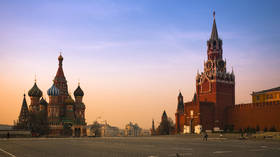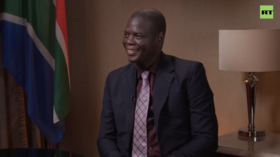White House claims on Syria chemical attack ‘obviously false’ – MIT professor (VIDEO)

A professor who challenged the 2013 claims of a chemical attack in Syria is now questioning the Trump administration’s narrative blaming the Assad government for the April 4 attack in the Idlib province town of Khan Shaykhun.
On Tuesday, the White House released a declassified intelligence brief accusing Syrian President Bashar Assad of ordering and organizing the attack, in which Syrian planes allegedly dropped chemical ordnance on civilians in the rebel-held town.
The report “contains absolutely no evidence that this attack was the result of a munition being dropped from an aircraft,” wrote Massachusetts Institute of Technology (MIT) Professor Theodore Postol, who reviewed it and put together a 14-page assessment, which he provided to RT on Wednesday.
Leading CW expert Theodor Postol of MIT just published a 14-page document questioning WH claims that Sarin was dropped from #Syrian AF plane pic.twitter.com/kMJgxwsN8Z
— EHSANI2 (@EHSANI22) April 12, 2017
“I believe it can be shown, without doubt, that the document does not provide any evidence whatsoever that the US government has concrete knowledge that the government of Syria was the source of the chemical attack in Khan Shaykhun,” wrote Postol.
A chemical attack with a nerve agent did occur, he said, but the available evidence does not support the US government’s conclusions.
“I have only had a few hours to quickly review the alleged White House intelligence report. But a quick perusal shows without a lot of analysis that this report cannot be correct,” Postol wrote.
It is “very clear who planned this attack, who authorized this attack and who conducted this attack itself,” Defense Secretary James Mattis told reporters at the Pentagon on Tuesday.
Earlier in the day, White House spokesman Sean Spicer also said that doubting the evidence would be “doubting the entire international reporting crew documenting this.”
The report offered by the White House, however, cited “a wide body of open-source material” and “social media accounts” from the rebel-held area, including footage provided by the White Helmets rescue group documented to have ties with jihadist rebels, Western and Gulf Arab governments.
Postol was not convinced by such evidence.
“Any competent analyst would have had questions about whether the debris in the crater was staged or real,” he wrote. “No competent analyst would miss the fact that the alleged sarin canister was forcefully crushed from above, rather than exploded by a munition within it.”
Instead, “the most plausible conclusion is that the sarin was dispensed by an improvised dispersal device made from a 122mm section of rocket tube filled with sarin and capped on both sides.”
“We again have a situation where the White House has issued an obviously false, misleading and amateurish intelligence report,” he concluded, recalling the 2013 situation when the Obama administration claimed Assad had used chemical weapons against the rebels in Ghouta, near Damascus.
“What the country is now being told by the White House cannot be true,” Postol wrote, “and the fact that this information has been provided in this format raises the most serious questions about the handling of our national security.”
On Tuesday, Russian General Staff spokesman Colonel-General Sergey Rudskoy questioned the “authenticity” of media reports concerning the attack. He said that using social media to reconstruct the course of events raised “serious doubts” not only among the Russian military but also “among many respected experts and organizations.”
Rudskoy noted that, under the 2013 agreement to give up its chemical weapons, the Syrian government destroyed its stockpiles at 10 sites that were under its control. This was verified by the Organization for Prohibition of Chemical Weapons (OPCW). However, the remaining two facilities were in territory controlled by the rebels, he said, and it remains unclear what happened to the chemicals stored there.














